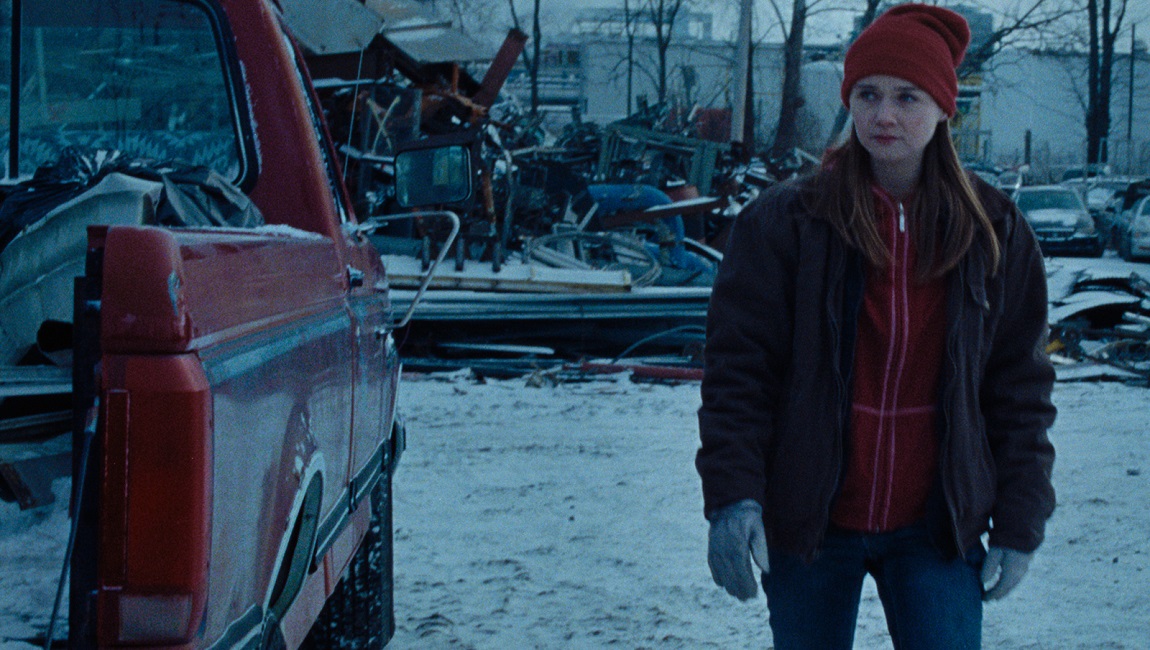Sátántangó’s very first shot set the stage for everything director Béla Tarr would make, what international festival directors would seek to imitate, and a developmental period for what would come to be colloquially known as “slow cinema.” Before this colossal seven-and-a-half-hour long trudge through the political manifestation of evil in rural Hungary, Tarr directed Cassavetes-like chamber dramas. He reached a formalist experimental phase with 1988’s Damnation, and its gradual shift to longer and longer takes. But it was Sátántangó where Tarr’s aesthetic fully flowered, as the filmmaker worked his way through a negligent and ugly universe: cows, cow shit, mud, and apocalyptic countryside squalor inch past the frame as the camera glides along to Mihály Vig’s elegiac score. This wasteland, contrasted by the ethereal movement of the camera, cements a visual metaphor for the rest of the film, a slow trip into the most cynical, grimy manifestations of the human condition. In its effects on a tight-knit farming community, Tarr wrings tension from the doomsaying of Irimiás (played by composer Vig), a returned exile with a supernatural capacity for political wit. Irimiás could be vaguely capitalist or vaguely Communist, but Tarr’s love for ambiguity just shows him making political promises that only serve himself.
The apocalyptic thrust exchanges violence for a state of constant, lugubrious dread
Indeed in nearly every interview he’s granted, Tarr quickly implores the audience not to read any specific political ideas — capitalist, Communist, Hungarian, or those of any other distinct national ideology—into his work. Perhaps this could be attributed to the Hungarian government’s overwatch of his films, but it’s equally easy to see Tarr’s vision as a damning portrait of the general (but often civic) evils of humanity on the level of Tolstoy or Dostoyevsky. For these seven-plus-hours, we follow Irimiás and a ragtag assortment of farming folk throughout the community, surviving on a modicum of hope, never finding fulfillment. Their stories interweave with scenes of the town doctor, who acts as voyeur to the townspeople, cataloguing their actions in a mysterious notebook while only leaving his house to find more alcohol. Sátántangó solidifies its direful tone through this observational record — an ultimately boring compendium of no real value. The film’s apocalyptic thrust, then, exchanges violence for a state of constant, lugubrious dread. What little hope to be gleaned from the film doesn’t come until the end, as the doctor stirs and seeks the answer to a sudden, almost prophetic bell-ringing in the distance. In a Tarkovsky film, this might signal a spiritual message, but in Tarr’s world, there’s an all-too-human and bleakly humorous answer: a madman simply broke in to warn of the nonexistent invasion of the Turks. For all the hours spent plodding through the Hungarian mud, Tarr culminates his vision in this final gesture: life as a Sisyphean climb, as a tango for Satan. He would only make three more films before retiring in 2011, each an addendum to the grand, fatalistic universe of Sátántangó. Everything that made Tarr an arthouse luminary lives here, in between the caustic humor, the political malevolence, and the dark, solemn beauty of the camera that binds it all together.
Part of Kicking the Canon – The Film Canon.







